GHOSTS DON'T REALLY CARE ABOUT US. The origins and fall of Halloween in Latvia.
Today is the actual day when, apart from a piece of the pop world, the ancient Latvians were celebrating their own "Halloween". For them the unremarkable wannabe masquerade taking place in Rīga these days would be more like a dry burp (also in comparison to what happens in the USA), and it wasn't even about the All Saints' Eve.
So here is a little reminder to all, how Latvians celebrated their own Halloween and did it way earlier than you think. Let us remind you also that we are the best maskers and, eventually, we have a bunch of our own creatures weird enough to impersonate rather than adapting another Jeepers Creepers.
For pagan Latvians the time of noticing, sensing and seeing the spirits of the dead ancestors in numbers usually begins during Autumn equinox, that is the Miķelis day (22/23 September) and lasts until the Mārtiņš day (10 November). The daylight gets shorter, fog thicker and winds gusty, and the period is called Veļu laiks or the time of "the passed". Depending on the region, the period is moved along calendar as well as the souls of the departed, who maintain their life after death are named differently - velēnieši, ēni, iļģi, ķauķi, vecajie (the elders), or urguči (when referring to bad spirits).
The most important day to share food with the dead during Veļu laiks was the "Simjūds" day taking place on 28 October (the spiritual time from Autumn equinox until Simjūds is usually called Zemlika). The traditions of food sharing were often various depending on the region, yet there are a few mutual activities. Supper was laid at home or in pirts (Latvian sauna), dry-houses or in sacred feasting grounds. If it took place in pirts, Latvians also left warm water, clean towels and steaming brooms for the spirits to use.
The meal was set by the master of the house; no one could touch the meal before the departed took their turn first. Veļi were invited to supper by the elder of the family, who lit up a sliver or candle and called the passed by name. When their feast was over, Veļi were kindly asked to leave - with songs, clapping or poking under the bed with crutches. If the food was somewhat touched, it was a good sign - the benevolence of the dead ancestors is granted1.
The Veļu laiks was usually a quiet and peaceful time. One could not sing, weave spin or trade. No one was forging anything, livestock was kept in one place. People were spending evenings in dim lights and running quiet activities, lingered in memories on the passed, guessed riddles and telling stories. When Veļu laiks was over, Latvians got ready to celebrate until the end of the year by making masks and costumes, and organize carnivals with mummers (ķekatnieki) to praise the next year's fertility.
As shown we don't need Halloween as we already live in shadows, and most of Latvians are very fond of it, hah. But If you really, really want to participate, here is a list of deities, creatures, spirits and characters from Latvian folk stories, pagan culture and epic literature we suggest trying out as your next costume. They are funny and weird enough, but, if you research more - every character has a potential to be the creepiest highlight of any event (the illustrations are a close, yet approximate cue and are ripped from the net illegally to spur your imagination).
AUSEKLIS (morning star)
Deity that marks the setting of the day and the light’s victory over darkness. During the liberation from Soviet reign Latvian activists used it as the general symbol of the awakening and peace.
BUDĒĻI (new year’s maskers)
Pagan calendar had different time organizing system, following Equinoxes and Solstices. The new year “Metenis” occurred at the beginning of February, and masking and feasting was important part of it as well as any other Winter celebration. Budēļi is the name of such mummers and maskers.
BURTNIEKS (soothsayer)
The legend connoisseur and sign reader, practicing sorcery, magic and fortune telling. Is ambivalent - can protect and also curse people.
DIEVS, LAIMA, MĀRA
God, Destiny mother, Earth mother – the holy trinity of the creation and management of the good forces of Latvian Pagan pantheon.
ĒNI (shadows)
Spirits and ghosts that molest people. When ignored they return in different, usually weirder and larger shapes and can kill if not defeated by protection of good spirits, or fled away from.
JODS (devil)
The lord of the dark side. The name derives from the Old Indian Sanskrit and even today means “black” in Lithuanian. Interestingly, is not the opponent to DIEVS, but to PĒRKONS (thunder), they fight each other constantly, often striking oaks or structures.
JUMIS (fertility)
Deity of fertility that is symbolized as two together-grown crops or fruits, brings lavish harvest and doubles the fertility of the household. This is the deity least affected by Christianity, and its symbol can still be seen mounted in many farmsteads at the end of house ridges.
KĀVI (dead soldiers)
The Latvian pagan version of Northern light that is explained as souls of dead soldiers fighting afar.
KRAUKLIS (raven)
One of the most iconic animals in pagan culture. Is ambivalent, serves as a messenger between the dark and light, usually presented with magic powers (often when killed), is sometimes invisible, can also bring back to life. The appearing of Raven usually indicates the coming of Death.
KRUPIS (toad)
An ambivalent and usually chthonic animal that serves as a messenger between the light and the dark forces and symbolizes wisdom. Can also be the semiotic symbol for life and death at the same time.
KRUSTNEŠI (crusaders)
The appearing of Christian religion in shape of all-annihilating crusaders is the beginning of the decline of all forces in Pagan tradition. It later affects the way Balts shape their universe and its governance, their culture, life management, architecture.
KURBADS
A famous hero from legends born to a horse mare and gifted with remarkable strength and good spirit. Frees his land from devilish creatures but, at the last fight is poisoned and dies together with his enemy.
LAPSA (fox)
Refereed as the most cunning animal in stories and tales, usually pretend to be dead to trick.
LAUSKIS (frost)
A mythological spirit appearing during cold temperatures and striking solid matters with its axe – this is how ancient cultures explained crackling of wood and timber in winter. LAUSKIS also bites in noses.
LĀČPLĒSIS (bearslayer)
A famous hero coined by Andrejs Pumpurs in his XIX century epos, when inspired by folk tales and legends. Symbolizes the beginning and continuous fight of Latvian nation for their first national independence. In his final fight is battling The Dark Knight on STABURAGS, and both fall into the river Daugava.
LIETUVĒNS (night hag)
An evil spirit as a symbol of sleep paralysis choking and riding people and kettle at nights and taking their stamina away through fever. LIETUVĒNS is a soul of a prematurely murdered person (or someone who hung oneself), that roams until its set time of death has come.
MĀJAS KUNGS (house lord)
A spirit that lives at or close to home, helps at household and protects the hearth over a symbolic sacrifice (usually the first bite of the meal) and can become a bit furious when not receiving it. The name of this spirit is approximate – even though hearth protectors are the most common mythological character to Pagan tradition, due to its settling close by or at homes, people have learned not to mention its name to keep it calm and the seminal name of this spirit is unknown (sometimes can be called as Cēlis or Bēlis).
MĒNESS (the moon)
The protector of night workers and over the dark times of corvée, also responsible for the management of time. Is of attractive character, when related to family ceremonies (usually wedding and intimate relationship) and is sometimes cheating on his wife SAULE.
MILZIS (three, six, nine-headed giant)
Through times three, six, nine, also twelve-headed creatures have changed their shapes and forms (giants, dragons, snakes, devils, yet most of the given shapes are affected by Christian or West European legends). One thing, that never changes, is the evil character all creatures stand for (except, human-like one-headed regular giants that are rather hilarious and kind). The nine or twelve-headed giants are considered the most vicious (often their heads can grow back when decapitated).
MILZU PUTNS (giant bird)
Seldom seen, powerful creatures that are usually kind-minded, nonetheless in some legends appear to have large appetite; like in the legend of KURBADS a sacrifice is needed for the bird to serve.
MIROŅU ĒDĀJS (corpse eater)
A rather eerie than terrifying character in stories. In newer tales corpse eaters are influenced by Christianity and are masked deuces/devils/witches or people/animals seduced by the devil into eating the dead. Yet in older legends cannibalism is more human and accidental, like fathers unknowingly eating his dead child prepared by the evil wife. Also suggested that necrophagia in tales can be a coded message of druid culture or pagan initiation rather than actual warning of being eaten.
MUŠMIRE (amanita)
The red, white-spotted, noxious mushrooms are ancient drugs to getting stoned or hallucinate, and were the basic ingredients for shamans. Amanitas contain toxins that reduce fear and might be taken by ancient warriors before battles.
OZOLS (oak)
The oldest-living shape of life in Latvia, similarly to many ancient European cultures, is a spiritual tree that bears sacrifice for all sorts of situations and is divined. Oak groves were enormously powerful places people were pious and afraid of. Proper, sometimes bloody sacrifice gave productive outcome for any needed reason.
PĒRKONS (thunder)
One of the top most prominent and praised deities in all Pagan cultures. The thunder is the true ruler of heaven, has his family living there and is a sworn enemy to JODS and all bad spirits. Usually strikes any place where his enemy might hide.
PĪLĀDZIS (rowan-tree)
Latvians still believe the rowan-tree (probably the most variously named shape of life in Baltic culture) has the power to stop, push back or even kill bad spirits and creatures. Most canes were made of this material, rowans are planted near homes and their twigs and branches are stuck into corners of buildings and door frames.
PŪĶIS (dragon)
Less refereed to old Western European traditions, dragons in Latvian myths are magically acquired servants bringing wealth and goods to its owner from neighbours, enemies, or any other people. Dragons can be disarmed by weird, hilarious activities such as dropping trousers when seeing them flying with the loot, can sometimes pout and rebel against its master.
RAGANA (witch)
Can be portrayed as evil, but also as wise, even young, beautiful women, sometimes men with magical powers and exclusive knowledge even to control natural phenomena. The etymology of the name RAGANA could be derived from “seeing” in Latvian, therefore witches are people with ability to see visions, are endued with sixth sense. More negative emphasis of the witch character is constructed during the Christian era.
SAULE (the sun)
The keeper of life and time that cures, strengthens and treats all living being well, but can sometimes “bite”. Always is described in a glamorous way, well-dressed, noble, well-tempered, acts as the householder of the sky.
SPĪDALA
A legendary hero coined by writer Andrejs Pumpurs in his XIX century epos on Latvian mythology that personalizes a young woman beginning her destiny as a jealous, seemingly devilish person, even risking her life, but then experiencing salvation, turning to the light side and becoming the symbol of the returning national strength. Therefore her name derives from double etymology - “spīdēt (to shine)” and “spītēt (to spite)”.
STABURAGS
A travertine cliff at the bank of Daugava known in folk songs and tales for a long time as a mourning girl turned into stone, but immortalized by a XIX century writer Andrejs Pumpurs stating STABURAGS as the place where the protagonist LĀČPLĒSIS fights the final battle against antagonist The Dark Knight until both fall from the cliff into Daugava river. Now STABURAGS is flooded since 1966 due to a Hydroelectric plant being build up the river thus has become more mythical than ever. P.S. CAPITAL R would like to see someone being dressed up as STABURAGS one day, that would be mint.
SUMPURNIS (dog-man)
An evil creature usually portrayed with human’s body and dog’s head. Live in herds under reign of dog-man king, usually on islands or in forests. Can attack and eat people, sometimes kidnap them and keep in captivity for fattening up until eaten.
TREŠAIS TĒVA DĒLS (the youngest son)
The third, youngest son in most of tales symbolizes the weak, also wise offspring to a dying father, that has a kind heart and enormous amount of luck, and help from spirits and deities appearing before through his journey.
ŪSIŅŠ (the deity of spring)
The deity of spring, blooming, light, horses (thus symbolizes the awakening of sexual energy) and bees. With the arriving of Ūsiņš (Spring equinox – end of March) horses are out on night-watch, ploughing of fields can begin. Mittens with Ūsiņš’ symbol gives good luck on the road.
VADĀTĀJS (evil driver)
Bad, tortured spirits or prematurely died souls dwelling in retired, wilder spots like forests, bogs, lakes and driving people away from roads, deluding into falling from cliffs or sinking into swamps (usually at midday at midnight). Can be seen as fellow, suddenly appearing travellers, yet mostly are of invisible force or shape or voice that calls for help and tricks into deadly places. If evil driver has clasped the victim riding a horse, the animal is immune to its force and can guide the human out of danger.
VELNS (deuce)
Although the most popular avatar of the evil in Latvian mythology, is usually described as impulsive, jealous, hilarious and foolish creature with bad time management, and that everyone can trick. The name could be formed in relation to VEĻI or dead spirits from the underground, and the character could be derived from the ultimate shape of ancient evil JODS, yet made more humane and encounted on roads, in towns, forests or any other places during the period of Christianity.
VEĻU MĀTE (death mother)
Although this is the Pagan version of grim reaper and can be happy about someone’s death or even murder its victims (is always interested in new deposits of the dead to her realm), VEĻU MĀTE is not dressed in dark and is not portrayed as a deity most should be afraid of. Also her world doesn’t much differentiate from life above the ground, and the dead must continue their existence the commenced way.
VILKATIS (werewolf)
In many Western cultures people that can turn into fierce werewolves at full moon are always granted as evil, although in ancient Latvian mythology VILKATIS is not welcomed by the dark forces as well. It makes them drift between their everyday lives as ordinary, often kind, wealthy and successful humans and manifest their subconscious anger of not belonging at nights as predators. Interestingly that many medieval West European writers tried to manifest the existence of werewolves by emphasizing Baltic territories particularly, while ancient cultures expressed the fear, yet awe at wolf-like beings as well organized, spiritual animals symbolizing military resistance against oppressors.
ZALKTIS (grass snake)
A very ancient symbol of wisdom and the collector of all good magic. Is connected to the underworld - when caught, killed and prepared correctly can give advantage to the eater of seeing dead souls and understanding their language (although it is forbidden to murder it). If ZALKTIS is kept nearby any house and fed, the homestead gains blessing. ZALKTIS can share special gifts of special powers to the chosen ones.
ZIVS (fish)
In ancient cultures the fish was often a symbol of fertility – by eating it in a specific way, females can become pregnant, also fish in the net is symbolized as a bride. Similarly any ZIVS is a transformation of SAULE when it falls into the sea for the night. Fish scales kept in wallets at New year’s eve can result in fortune.
So, what would you be dressing up like next?
1 Veļu laiks. Lsm.lv↩
So here is a little reminder to all, how Latvians celebrated their own Halloween and did it way earlier than you think. Let us remind you also that we are the best maskers and, eventually, we have a bunch of our own creatures weird enough to impersonate rather than adapting another Jeepers Creepers.
 |
| Janis Rozentāls - Veļu māte (Death Mother). |
For pagan Latvians the time of noticing, sensing and seeing the spirits of the dead ancestors in numbers usually begins during Autumn equinox, that is the Miķelis day (22/23 September) and lasts until the Mārtiņš day (10 November). The daylight gets shorter, fog thicker and winds gusty, and the period is called Veļu laiks or the time of "the passed". Depending on the region, the period is moved along calendar as well as the souls of the departed, who maintain their life after death are named differently - velēnieši, ēni, iļģi, ķauķi, vecajie (the elders), or urguči (when referring to bad spirits).
THEN
Our ancestors considered the passed still being "awake"; the dead could share advice or help answering unclear questions. It was generally understood that Veļi are part of kin, and, once per year, the whole family must feast together.The most important day to share food with the dead during Veļu laiks was the "Simjūds" day taking place on 28 October (the spiritual time from Autumn equinox until Simjūds is usually called Zemlika). The traditions of food sharing were often various depending on the region, yet there are a few mutual activities. Supper was laid at home or in pirts (Latvian sauna), dry-houses or in sacred feasting grounds. If it took place in pirts, Latvians also left warm water, clean towels and steaming brooms for the spirits to use.
The meal was set by the master of the house; no one could touch the meal before the departed took their turn first. Veļi were invited to supper by the elder of the family, who lit up a sliver or candle and called the passed by name. When their feast was over, Veļi were kindly asked to leave - with songs, clapping or poking under the bed with crutches. If the food was somewhat touched, it was a good sign - the benevolence of the dead ancestors is granted1.
The Veļu laiks was usually a quiet and peaceful time. One could not sing, weave spin or trade. No one was forging anything, livestock was kept in one place. People were spending evenings in dim lights and running quiet activities, lingered in memories on the passed, guessed riddles and telling stories. When Veļu laiks was over, Latvians got ready to celebrate until the end of the year by making masks and costumes, and organize carnivals with mummers (ķekatnieki) to praise the next year's fertility.
NOW
Today there might have been a little wave of micro-popularity some
years ago in Rīga, but lately All Saints' Night again has again become as meaningless as "let's act like teenagers and let's get drunk in ugly outfits". There might be some reasons to that - 1) it's because we never really had any history of local horror
movies (apart from Aik Karapetian's work) to motivate Halloween theme in
popular culture; 2) we also don't have any real history of
graphic novels whose characters are actively placed among the most
popular costumes; 3) it's our post-Soviet vigilance to blame - let's be precautious toward capitalist trends!
But, eventually, maybe it's because of 4) Latvians sometimes celebrate another witch-night called the Walpurgis Night on 30 April. It comes directly from Christian customs, when this was the night when they tried protecting themselves from all local witches and evil spirits. It somewhat attracts Latvians more since the tradition is much older than the imported All Saints' Night as well as a part of youngsters seem to be bigger fans of having less fun, but more doom. Still "Made in China" souvenirs are sold in most trinket stores, yet here is an infogram proving we don't really bother about either crafting or buying them:
But, eventually, maybe it's because of 4) Latvians sometimes celebrate another witch-night called the Walpurgis Night on 30 April. It comes directly from Christian customs, when this was the night when they tried protecting themselves from all local witches and evil spirits. It somewhat attracts Latvians more since the tradition is much older than the imported All Saints' Night as well as a part of youngsters seem to be bigger fans of having less fun, but more doom. Still "Made in China" souvenirs are sold in most trinket stores, yet here is an infogram proving we don't really bother about either crafting or buying them:
As shown we don't need Halloween as we already live in shadows, and most of Latvians are very fond of it, hah. But If you really, really want to participate, here is a list of deities, creatures, spirits and characters from Latvian folk stories, pagan culture and epic literature we suggest trying out as your next costume. They are funny and weird enough, but, if you research more - every character has a potential to be the creepiest highlight of any event (the illustrations are a close, yet approximate cue and are ripped from the net illegally to spur your imagination).
AUSEKLIS (morning star)
Deity that marks the setting of the day and the light’s victory over darkness. During the liberation from Soviet reign Latvian activists used it as the general symbol of the awakening and peace.
BUDĒĻI (new year’s maskers)
Pagan calendar had different time organizing system, following Equinoxes and Solstices. The new year “Metenis” occurred at the beginning of February, and masking and feasting was important part of it as well as any other Winter celebration. Budēļi is the name of such mummers and maskers.
BURTNIEKS (soothsayer)
The legend connoisseur and sign reader, practicing sorcery, magic and fortune telling. Is ambivalent - can protect and also curse people.
DIEVS, LAIMA, MĀRA
God, Destiny mother, Earth mother – the holy trinity of the creation and management of the good forces of Latvian Pagan pantheon.
ĒNI (shadows)
Spirits and ghosts that molest people. When ignored they return in different, usually weirder and larger shapes and can kill if not defeated by protection of good spirits, or fled away from.
JODS (devil)
The lord of the dark side. The name derives from the Old Indian Sanskrit and even today means “black” in Lithuanian. Interestingly, is not the opponent to DIEVS, but to PĒRKONS (thunder), they fight each other constantly, often striking oaks or structures.
JUMIS (fertility)
Deity of fertility that is symbolized as two together-grown crops or fruits, brings lavish harvest and doubles the fertility of the household. This is the deity least affected by Christianity, and its symbol can still be seen mounted in many farmsteads at the end of house ridges.
KĀVI (dead soldiers)
The Latvian pagan version of Northern light that is explained as souls of dead soldiers fighting afar.
KRAUKLIS (raven)
One of the most iconic animals in pagan culture. Is ambivalent, serves as a messenger between the dark and light, usually presented with magic powers (often when killed), is sometimes invisible, can also bring back to life. The appearing of Raven usually indicates the coming of Death.
KRUPIS (toad)
An ambivalent and usually chthonic animal that serves as a messenger between the light and the dark forces and symbolizes wisdom. Can also be the semiotic symbol for life and death at the same time.
KRUSTNEŠI (crusaders)
The appearing of Christian religion in shape of all-annihilating crusaders is the beginning of the decline of all forces in Pagan tradition. It later affects the way Balts shape their universe and its governance, their culture, life management, architecture.
KURBADS
A famous hero from legends born to a horse mare and gifted with remarkable strength and good spirit. Frees his land from devilish creatures but, at the last fight is poisoned and dies together with his enemy.
LAPSA (fox)
Refereed as the most cunning animal in stories and tales, usually pretend to be dead to trick.
LAUSKIS (frost)
A mythological spirit appearing during cold temperatures and striking solid matters with its axe – this is how ancient cultures explained crackling of wood and timber in winter. LAUSKIS also bites in noses.
LĀČPLĒSIS (bearslayer)
A famous hero coined by Andrejs Pumpurs in his XIX century epos, when inspired by folk tales and legends. Symbolizes the beginning and continuous fight of Latvian nation for their first national independence. In his final fight is battling The Dark Knight on STABURAGS, and both fall into the river Daugava.
LIETUVĒNS (night hag)
An evil spirit as a symbol of sleep paralysis choking and riding people and kettle at nights and taking their stamina away through fever. LIETUVĒNS is a soul of a prematurely murdered person (or someone who hung oneself), that roams until its set time of death has come.
MĀJAS KUNGS (house lord)
A spirit that lives at or close to home, helps at household and protects the hearth over a symbolic sacrifice (usually the first bite of the meal) and can become a bit furious when not receiving it. The name of this spirit is approximate – even though hearth protectors are the most common mythological character to Pagan tradition, due to its settling close by or at homes, people have learned not to mention its name to keep it calm and the seminal name of this spirit is unknown (sometimes can be called as Cēlis or Bēlis).
MĒNESS (the moon)
The protector of night workers and over the dark times of corvée, also responsible for the management of time. Is of attractive character, when related to family ceremonies (usually wedding and intimate relationship) and is sometimes cheating on his wife SAULE.
MILZIS (three, six, nine-headed giant)
Through times three, six, nine, also twelve-headed creatures have changed their shapes and forms (giants, dragons, snakes, devils, yet most of the given shapes are affected by Christian or West European legends). One thing, that never changes, is the evil character all creatures stand for (except, human-like one-headed regular giants that are rather hilarious and kind). The nine or twelve-headed giants are considered the most vicious (often their heads can grow back when decapitated).
MILZU PUTNS (giant bird)
Seldom seen, powerful creatures that are usually kind-minded, nonetheless in some legends appear to have large appetite; like in the legend of KURBADS a sacrifice is needed for the bird to serve.
MIROŅU ĒDĀJS (corpse eater)
A rather eerie than terrifying character in stories. In newer tales corpse eaters are influenced by Christianity and are masked deuces/devils/witches or people/animals seduced by the devil into eating the dead. Yet in older legends cannibalism is more human and accidental, like fathers unknowingly eating his dead child prepared by the evil wife. Also suggested that necrophagia in tales can be a coded message of druid culture or pagan initiation rather than actual warning of being eaten.
MUŠMIRE (amanita)
The red, white-spotted, noxious mushrooms are ancient drugs to getting stoned or hallucinate, and were the basic ingredients for shamans. Amanitas contain toxins that reduce fear and might be taken by ancient warriors before battles.
OZOLS (oak)
The oldest-living shape of life in Latvia, similarly to many ancient European cultures, is a spiritual tree that bears sacrifice for all sorts of situations and is divined. Oak groves were enormously powerful places people were pious and afraid of. Proper, sometimes bloody sacrifice gave productive outcome for any needed reason.
PĒRKONS (thunder)
One of the top most prominent and praised deities in all Pagan cultures. The thunder is the true ruler of heaven, has his family living there and is a sworn enemy to JODS and all bad spirits. Usually strikes any place where his enemy might hide.
PĪLĀDZIS (rowan-tree)
Latvians still believe the rowan-tree (probably the most variously named shape of life in Baltic culture) has the power to stop, push back or even kill bad spirits and creatures. Most canes were made of this material, rowans are planted near homes and their twigs and branches are stuck into corners of buildings and door frames.
PŪĶIS (dragon)
Less refereed to old Western European traditions, dragons in Latvian myths are magically acquired servants bringing wealth and goods to its owner from neighbours, enemies, or any other people. Dragons can be disarmed by weird, hilarious activities such as dropping trousers when seeing them flying with the loot, can sometimes pout and rebel against its master.
RAGANA (witch)
Can be portrayed as evil, but also as wise, even young, beautiful women, sometimes men with magical powers and exclusive knowledge even to control natural phenomena. The etymology of the name RAGANA could be derived from “seeing” in Latvian, therefore witches are people with ability to see visions, are endued with sixth sense. More negative emphasis of the witch character is constructed during the Christian era.
SAULE (the sun)
The keeper of life and time that cures, strengthens and treats all living being well, but can sometimes “bite”. Always is described in a glamorous way, well-dressed, noble, well-tempered, acts as the householder of the sky.
SPĪDALA
A legendary hero coined by writer Andrejs Pumpurs in his XIX century epos on Latvian mythology that personalizes a young woman beginning her destiny as a jealous, seemingly devilish person, even risking her life, but then experiencing salvation, turning to the light side and becoming the symbol of the returning national strength. Therefore her name derives from double etymology - “spīdēt (to shine)” and “spītēt (to spite)”.
STABURAGS
A travertine cliff at the bank of Daugava known in folk songs and tales for a long time as a mourning girl turned into stone, but immortalized by a XIX century writer Andrejs Pumpurs stating STABURAGS as the place where the protagonist LĀČPLĒSIS fights the final battle against antagonist The Dark Knight until both fall from the cliff into Daugava river. Now STABURAGS is flooded since 1966 due to a Hydroelectric plant being build up the river thus has become more mythical than ever. P.S. CAPITAL R would like to see someone being dressed up as STABURAGS one day, that would be mint.
SUMPURNIS (dog-man)
An evil creature usually portrayed with human’s body and dog’s head. Live in herds under reign of dog-man king, usually on islands or in forests. Can attack and eat people, sometimes kidnap them and keep in captivity for fattening up until eaten.
TREŠAIS TĒVA DĒLS (the youngest son)
The third, youngest son in most of tales symbolizes the weak, also wise offspring to a dying father, that has a kind heart and enormous amount of luck, and help from spirits and deities appearing before through his journey.
ŪSIŅŠ (the deity of spring)
The deity of spring, blooming, light, horses (thus symbolizes the awakening of sexual energy) and bees. With the arriving of Ūsiņš (Spring equinox – end of March) horses are out on night-watch, ploughing of fields can begin. Mittens with Ūsiņš’ symbol gives good luck on the road.
VADĀTĀJS (evil driver)
Bad, tortured spirits or prematurely died souls dwelling in retired, wilder spots like forests, bogs, lakes and driving people away from roads, deluding into falling from cliffs or sinking into swamps (usually at midday at midnight). Can be seen as fellow, suddenly appearing travellers, yet mostly are of invisible force or shape or voice that calls for help and tricks into deadly places. If evil driver has clasped the victim riding a horse, the animal is immune to its force and can guide the human out of danger.
VELNS (deuce)
Although the most popular avatar of the evil in Latvian mythology, is usually described as impulsive, jealous, hilarious and foolish creature with bad time management, and that everyone can trick. The name could be formed in relation to VEĻI or dead spirits from the underground, and the character could be derived from the ultimate shape of ancient evil JODS, yet made more humane and encounted on roads, in towns, forests or any other places during the period of Christianity.
VEĻU MĀTE (death mother)
Although this is the Pagan version of grim reaper and can be happy about someone’s death or even murder its victims (is always interested in new deposits of the dead to her realm), VEĻU MĀTE is not dressed in dark and is not portrayed as a deity most should be afraid of. Also her world doesn’t much differentiate from life above the ground, and the dead must continue their existence the commenced way.
VILKATIS (werewolf)
In many Western cultures people that can turn into fierce werewolves at full moon are always granted as evil, although in ancient Latvian mythology VILKATIS is not welcomed by the dark forces as well. It makes them drift between their everyday lives as ordinary, often kind, wealthy and successful humans and manifest their subconscious anger of not belonging at nights as predators. Interestingly that many medieval West European writers tried to manifest the existence of werewolves by emphasizing Baltic territories particularly, while ancient cultures expressed the fear, yet awe at wolf-like beings as well organized, spiritual animals symbolizing military resistance against oppressors.
ZALKTIS (grass snake)
A very ancient symbol of wisdom and the collector of all good magic. Is connected to the underworld - when caught, killed and prepared correctly can give advantage to the eater of seeing dead souls and understanding their language (although it is forbidden to murder it). If ZALKTIS is kept nearby any house and fed, the homestead gains blessing. ZALKTIS can share special gifts of special powers to the chosen ones.
ZIVS (fish)
In ancient cultures the fish was often a symbol of fertility – by eating it in a specific way, females can become pregnant, also fish in the net is symbolized as a bride. Similarly any ZIVS is a transformation of SAULE when it falls into the sea for the night. Fish scales kept in wallets at New year’s eve can result in fortune.
So, what would you be dressing up like next?
1 Veļu laiks. Lsm.lv↩







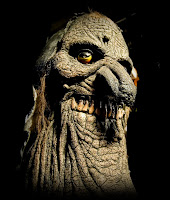
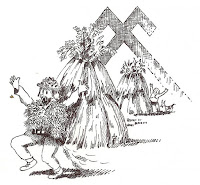



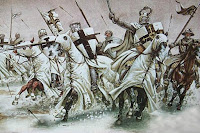

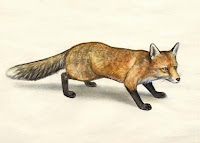


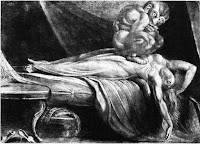


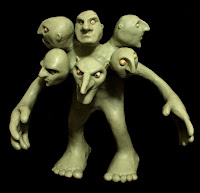






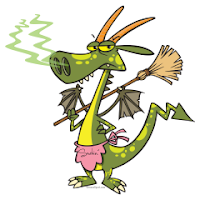
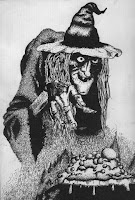












sumpurnim nav tā labākā vizuālā izvēle. sumpurnis vairāk līdzinās milzīgam antrofomorfiskam sunim, nevis sunim ar cilvēka seju. ja kurbads nokauj ar pūlēm sumpurni, tas nav vienkārši cilvēcisks sunītis....
ReplyDelete